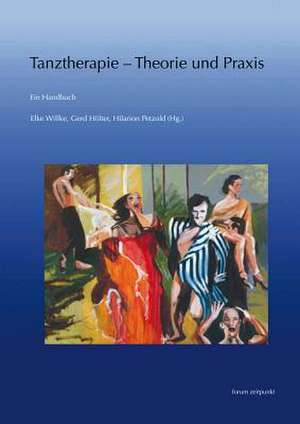Tanztherapie - Theorie Und Praxis: Zeitpunkt Musik
Editat de Gerd Holter, Petzold, Hilarion G., Elke Willkede Limba Germană Paperback
Din seria Zeitpunkt Musik
-
 Preț: 249.18 lei
Preț: 249.18 lei -
 Preț: 444.75 lei
Preț: 444.75 lei -
 Preț: 141.91 lei
Preț: 141.91 lei -
 Preț: 221.68 lei
Preț: 221.68 lei -
 Preț: 270.44 lei
Preț: 270.44 lei -
 Preț: 191.48 lei
Preț: 191.48 lei -
 Preț: 217.13 lei
Preț: 217.13 lei -
 Preț: 270.78 lei
Preț: 270.78 lei -
 Preț: 276.05 lei
Preț: 276.05 lei -
 Preț: 221.68 lei
Preț: 221.68 lei - 5%
 Preț: 271.58 lei
Preț: 271.58 lei -
 Preț: 170.43 lei
Preț: 170.43 lei -
 Preț: 211.62 lei
Preț: 211.62 lei -
 Preț: 162.57 lei
Preț: 162.57 lei -
 Preț: 403.76 lei
Preț: 403.76 lei -
 Preț: 273.66 lei
Preț: 273.66 lei -
 Preț: 197.40 lei
Preț: 197.40 lei -
 Preț: 434.22 lei
Preț: 434.22 lei -
 Preț: 162.57 lei
Preț: 162.57 lei -
 Preț: 338.99 lei
Preț: 338.99 lei - 5%
 Preț: 141.72 lei
Preț: 141.72 lei -
 Preț: 199.31 lei
Preț: 199.31 lei -
 Preț: 294.58 lei
Preț: 294.58 lei - 23%
 Preț: 842.75 lei
Preț: 842.75 lei -
 Preț: 432.95 lei
Preț: 432.95 lei - 5%
 Preț: 313.69 lei
Preț: 313.69 lei - 5%
 Preț: 191.14 lei
Preț: 191.14 lei -
 Preț: 220.92 lei
Preț: 220.92 lei -
 Preț: 333.32 lei
Preț: 333.32 lei -
 Preț: 214.55 lei
Preț: 214.55 lei -
 Preț: 191.65 lei
Preț: 191.65 lei -
 Preț: 222.66 lei
Preț: 222.66 lei -
 Preț: 177.22 lei
Preț: 177.22 lei -
 Preț: 192.82 lei
Preț: 192.82 lei -
 Preț: 210.99 lei
Preț: 210.99 lei -
 Preț: 270.44 lei
Preț: 270.44 lei - 5%
 Preț: 221.91 lei
Preț: 221.91 lei -
 Preț: 220.63 lei
Preț: 220.63 lei -
 Preț: 275.12 lei
Preț: 275.12 lei - 5%
 Preț: 258.31 lei
Preț: 258.31 lei -
 Preț: 272.08 lei
Preț: 272.08 lei -
 Preț: 207.83 lei
Preț: 207.83 lei -
 Preț: 336.16 lei
Preț: 336.16 lei -
 Preț: 284.55 lei
Preț: 284.55 lei -
 Preț: 192.73 lei
Preț: 192.73 lei - 5%
 Preț: 321.69 lei
Preț: 321.69 lei -
 Preț: 275.36 lei
Preț: 275.36 lei -
 Preț: 329.57 lei
Preț: 329.57 lei -
 Preț: 283.63 lei
Preț: 283.63 lei - 5%
 Preț: 256.53 lei
Preț: 256.53 lei
Preț: 247.63 lei
Nou
Puncte Express: 371
Preț estimativ în valută:
47.42€ • 48.91$ • 39.30£
47.42€ • 48.91$ • 39.30£
Carte indisponibilă temporar
Doresc să fiu notificat când acest titlu va fi disponibil:
Se trimite...
Preluare comenzi: 021 569.72.76
Specificații
ISBN-13: 9783954900015
ISBN-10: 3954900017
Pagini: 400
Editura: Dr. Ludwig Reichert
Seria Zeitpunkt Musik
ISBN-10: 3954900017
Pagini: 400
Editura: Dr. Ludwig Reichert
Seria Zeitpunkt Musik
